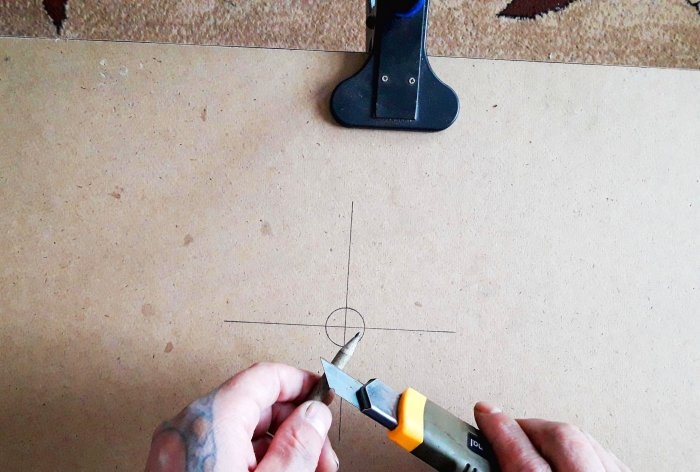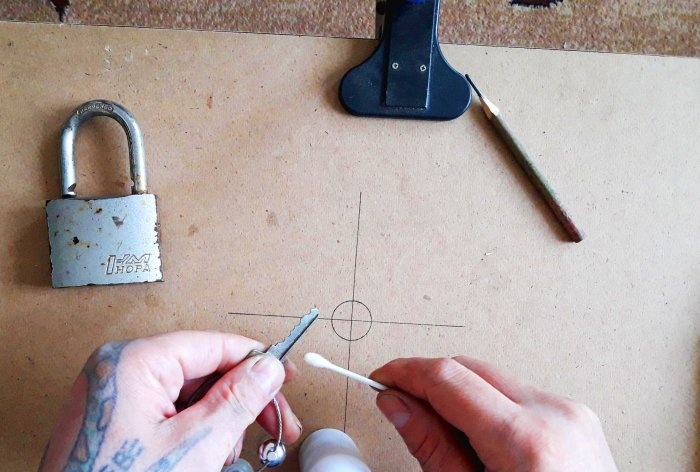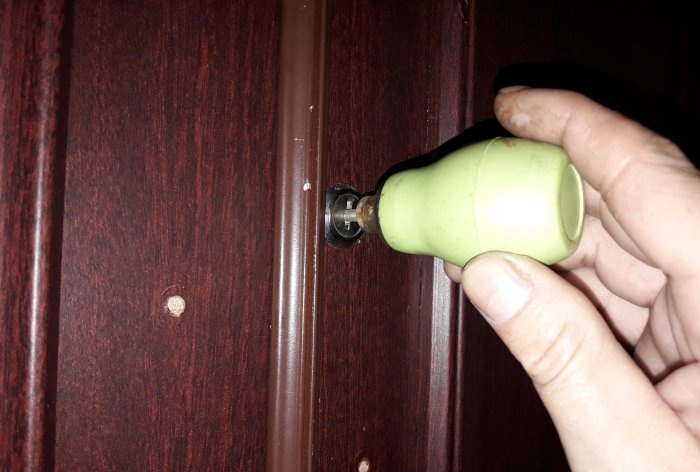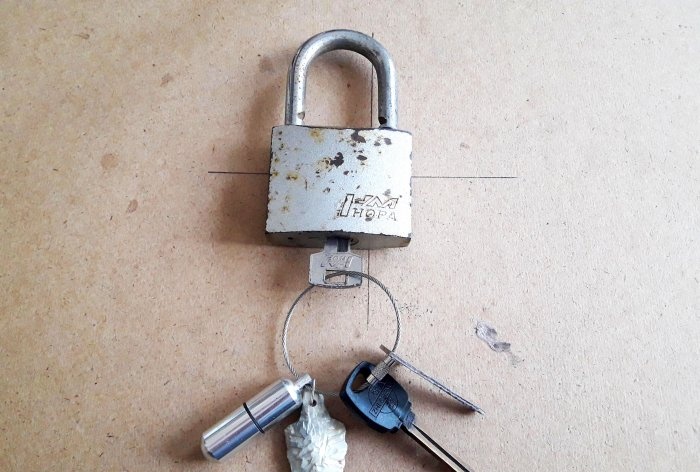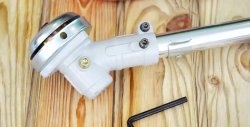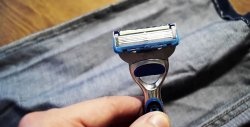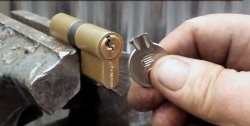Graphite is a universal substance; its areas of application are extremely wide. It is used almost everywhere: from a simple pencil and brushes for an electric motor, to nuclear energy. Graphite can also be very useful in home life. In addition to its banal use as a writing instrument, it is also a very good lubricant for small and even miniature mechanisms.
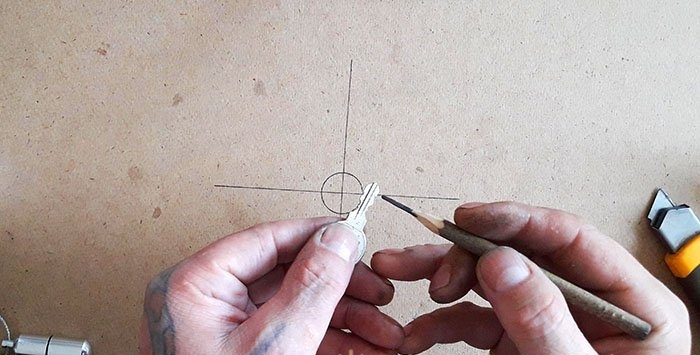
Small ones are something like keyholes. We will talk about them today. In this regard, graphite compares favorably with most lubricants intended for similar purposes. Firstly, it does not freeze in any cold weather. Secondly, it does not dry out and does not evaporate in the heat. Thirdly, it will not be washed out of the lock hole (for example, by rain) if the lock is padlocked. Well, in the end, it is not fluid, and will not drip or ooze from the keyhole. I don't mean the special graphite lubricants sold in hardware stores. They are, for the most part, made on the basis of a variety of oils and solid oils, and differ little from other oil lubricants. In fact, everything is much simpler.As easy as pie. You will need the minimum set of tools and consumables that everyone, without exception, has!
You will need:
- Simple pencil. Preferably soft.
- Stationery knife.
- Solvent.
- Cotton swab.
- A syringe, or a small medical bulb (this is for internal locks).
Lubricate the locks with graphite
There are two ways to lubricate the lock. The first is to thoroughly wipe the key itself with a graphite rod from a simple pencil, and properly move it in the lock, that is, develop it. And the second is to rub the graphite rod with a file, or scrape it with a stationery knife, and pour it into the lock hole. A generous amount of graphite applied to the key is enough to lubricate the internal mechanism of the lock. But we will use both options at once. To be sure. But there's another little catch; how to deliver crushed graphite inside the lock if this lock is embedded in the door. Disassembling the lock and removing the cylinder to lubricate it is too long and tedious. This is where the syringe will help us out. I took a small medical bulb, the principle of operation is not much different. So, let's start with an old, rusty padlock that hasn't been oiled for six months, which I locked up from the street. More precisely, he took it from the barn. On this one, it would be best to test the work and effectiveness of graphite lubricant, since the oil with which I previously lubricated it had long since dried out and eroded. First, of course, you need to dry it thoroughly and then wipe the lock with a dry cloth. While the lock mechanism is drying from condensation, we will prepare a simple pencil. More precisely, the rod is from him. We will need to remove two or three centimeters of graphite rod from the wooden shell. To do this, using a utility knife, cut off the above amount of wooden shell.
Next, rub the key to the lock with this rod. But first, it would be a good idea to clean the key from rust, dust and dirt using a solvent and a cotton swab.
Rub so that the entire surface area of the key is covered with graphite. Except for the holder, of course. We especially carefully coat the grooves and teeth of the key. So that graphite dust formed from friction remains in them.
Now we take the dried lock, stick the key into the hole, and turn it several times. And let’s crumble a little more graphite into the keyhole itself; We place the rod against the well, at an angle, and scrape the graphite inside.
You don't need much. Also, we insert the key and develop the lock mechanism properly. I saw a simpler way; Simply insert a graphite rod into the well and break it off. Then the key is used to crush it inside the lock. But I didn’t dare to try such an experiment - you never know... it’s better not to be lazy and rub it. Now let's deal with the internal lock. The lock I chose in the cabinet door, although new, I have never lubricated it yet. The principle of operation is not much different from the previous one. Only in this case, we crush the graphite not into a well, but into a syringe, or into a small medical bulb, which is usually used to pump out snot from the nose of a sick pet.
Using a utility knife, scrape the graphite inside the pear, put on the lid, close the hole with your finger, turn it over, and lightly shake off the grated graphite closer to the hole.
Now we lean the hole of the pear against the keyhole, and by sharply pressing the sides of the pear, we send the graphite dust inside the lock.
We also lubricate the key with graphite and develop the mechanism.

That's all.Thus, you can save yourself from wiping away oil leaks from the well after lubrication. In addition, graphite lubricant lasts much longer than oil lubricant.

